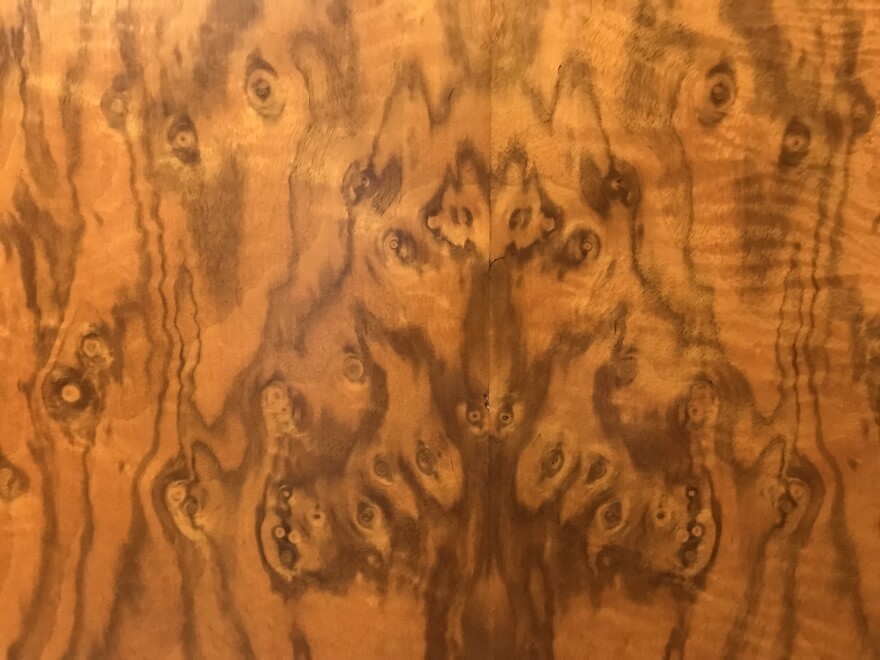Perhaps the most whimsical room in the North Dakota Capitol is the “monkey room.” The room is a small hallway that serves as a private entrance for the Secretary of State to his or her office on the first floor. A Grand Forks carpenter built the room in 1933 using a method called bookmatching, which mirrors two surfaces. He was paid 80 cents an hour for his work.
What makes the “monkey room” unique is its walls of California walnut, a rare wood notable for its wavy markings or “wild figure veneer.” If you use your imagination, you can see eyes and faces of various animals in the woodwork! Some include a bison, Garfield the cat, a rabbit, a wolf, a horse, an owl and, of course, a monkey.
The Capitol was completed in 1934 during the Great Depression. The previous Capitol burned down in 1930.
The wood for the “monkey room” was allegedly shipped by mistake to the construction site, but nevertheless was put to use.
The “monkey room” has been a highlight of Capitol tours for many years. On this date in 1948, a Bismarck Tribune columnist described the room as “one of the sites most kids ask to see when they visit the state Capitol building” for “the fantastic pictures nature painted” in the grain of the paneling. Quoth the Tribune: “Clearly visible are the heads of monkeys, lions, tigers, horses, cattle, dogs, pigs and men. If you have a good imagination you can see a half a hundred or more.”
Other unique materials used in the Capitol’s construction include Belgian marble, Yellowstone travertine, East Indian rosewood, English oak, and Honduran mahogany. And other rooms also stir the imagination, including the “moon and stars” lighting in the House of Representatives, and “sunrise” lighting in the Senate across the hall.
Dakota Datebook by Jack Dura
Sources:
- The Bismarck Tribune. 1934, April 7. Page 26: Artistry in Capitol below fourth floor
- The Bismarck Tribune. 1934, April 7. Page 28: Special suites have beautiful finishes
- The Bismarck Tribune. 1934, September 29. Page 24: Beauty and utility combine in capitol
- The Bismarck Tribune. 1948, July 27. Page 1: Browsing around; Monkey room
- The Bismarck Tribune. 1953, April 2. Page 1: Browsing around; Monkey room
- Smith, N. 2013, October 24. Carpenter’s family examines North Dakota Capitol’s Monkey Room. The Bismarck Tribune. Retrieved from: bismarcktribune.com/news/state-and-regional/carpenters-family-examines-north-dakota-capitols-monkey-room/article_60a9bfb6-3cf9-11e3-9c67-0019bb2963f4.html
- North Dakota Office of Management and Budget. 2022, June 17. Monkey room. YouTube. Retrieved from: youtube.com/watch?v=_JD_Zc5muDI
- Capitol Complex Photo Gallery: omb.nd.gov/capitol-complex/photo-gallery?page=0




